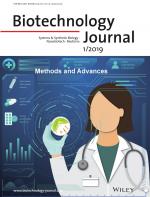A theoretical and experimental approach toward the development of affinity adsorbents for GFP and GFP-fusion proteins purification
- Citation:
- Fernandes, CSM, Pina AS, Dias AMGC, Branco RJF, Roque ACA. 2014. A theoretical and experimental approach toward the development of affinity adsorbents for GFP and GFP-fusion proteins purification. Journal of Biotechnology. 186:13-20.
Abstract:
The green fluorescent protein (GFP) is widely employed to report on a variety of molecular phenomena, but its selective recovery is hampered by the lack of a low-cost and robust purification alternative. This work reports an integrated approach combining rational design and experimental validation toward the optimization of a small fully-synthetic ligand for GFP purification. A total of 56 affinity ligands based on a first-generation lead structure were rationally designed through molecular modeling protocols. The library of ligands was further synthesized by solid-phase combinatorial methods based on the Ugi reaction and screened against Escherichia coli extracts containing GFP. Ligands A4C2, A5C5 and A5C6 emerged as the new lead structures based on the high estimated theoretical affinity constants and the high GFP binding percentages and enrichment factors. The elution of GFP from these adsorbents was further characterized, where the best compromise between mild elution conditions, yield and purity was found for ligands A5C5 and A5C6. These were tested for purifying a model GFP-fusion protein, where ligand A5C5 yielded higher protein recovery and purity. The molecular interactions between the lead ligands and GFP were further assessed by molecular dynamics simulations, showing a wide range of potential hydrophobic and hydrogen-bond interactions.







